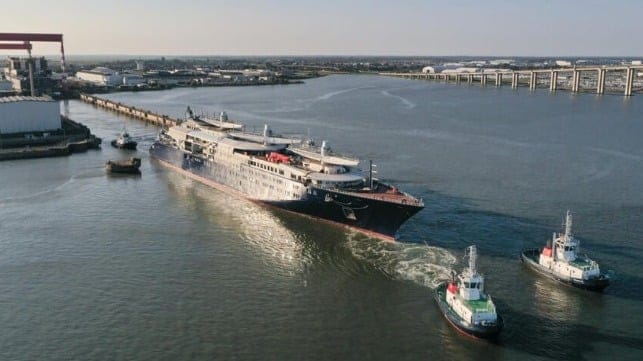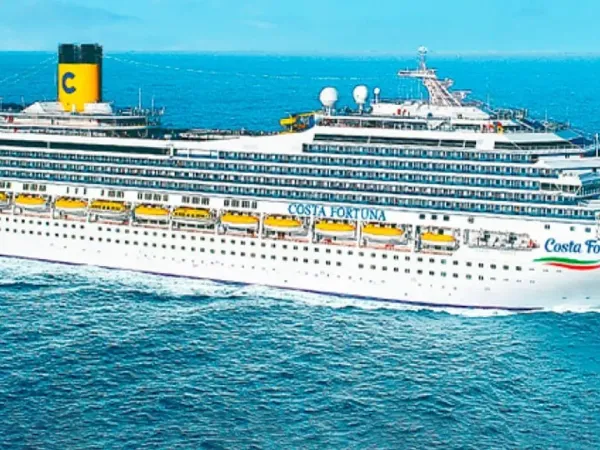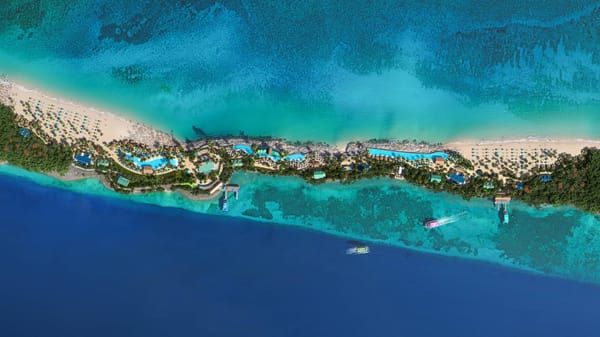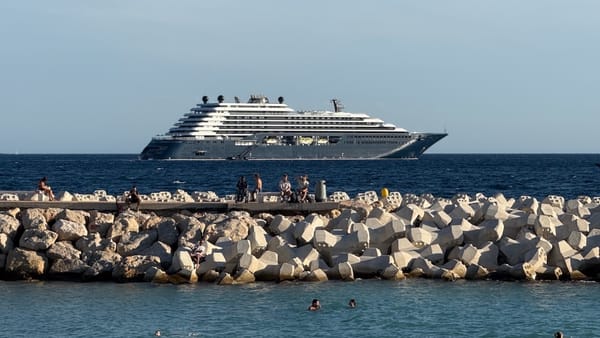Orient Express Corinthian Floats Out as World’s Largest Sailing Cruise Yacht
Set to redefine luxury cruising, the Orient Express Corinthian blends advanced sail technology and eco-focused features, reflecting a shift toward greener travel in the cruise industry.

In a major milestone for sustainable luxury cruising, the Orient Express Corinthian, touted as the world’s largest sail-equipped cruise yacht, was floated out at the Chantiers de l’Atlantique shipyard in Saint-Nazaire, France, on June 16, 2025. Developed in collaboration with Accor Group and the historic Orient Express brand, the 727‑foot, 26,200‑gross‑ton vessel now moves to the outfitting phase ahead of its scheduled debut in June 2026. Registered under the French flag and built to Bureau Veritas class requirements, the ship reflects a fusion of cutting-edge wind propulsion technology and high-end hospitality.
Key Milestones and Construction Progress
The first steel cut took place in March 2024, and construction advanced rapidly, culminating in the float-out of a hull assembled from 14 structural blocks. Sea trials and final commissioning are expected to run through 2025 and into 2026. According to Orient Express Sailing Yachts, this milestone transition to outfitting signifies the brand’s intention to begin operations in the Mediterranean from Marseille in June 2026, followed by a transatlantic crossing to the Caribbean for the winter season.
Chantiers de l’Atlantique confirms that upon completion, Orient Express Corinthian will be the largest sailing ship in the world, offering a modern take on wind-powered travel. The ship has a crew of around 170 to support a maximum of 110 guests.
Technical and Environmental Features
Designed around three towering balestron masts, each approximately 328 feet high, the vessel employs the rigid SolidSail system, together spanning about 16,146 square feet of sail surface. Under favorable wind conditions, the yacht can travel entirely under sail with speeds up to 17 knots. A hybrid backup using liquefied natural gas (LNG) enables operation at up to 15 knots when wind power is insufficient.
To further its eco-friendly profile, Orient Express Corinthian integrates several marine protection systems, including an AI-powered floating object detection tool designed to reduce collisions with marine mammals. Dynamic positioning technology eliminates the need to drop anchor over sensitive seabeds, and a UV-based ballast water treatment system avoids the use of chemicals, minimizing harm to oceanic ecosystems.
Guest Accommodations and Onboard Experience
The yacht’s 54 suites, ranging from roughly 485 to 2,476 square feet, reflect low-occupancy exclusivity while providing generous space. Many suites feature large picture windows or terraces and higher-than-average ceilings. Interiors are guided by artistic director Maxime d’Angeac, who combines vintage Orient Express heritage with modern design. Five onboard restaurants and private dining venues will be supervised by multi‑Michelin‑starred chef Yannick Alléno, complemented by amenities such as pools, a bar, and an amphitheater.
Launch Program and Itineraries
The maiden season begins in June 2026, offering 27 itineraries across the Mediterranean and Adriatic between May and October. These voyages range from two-night getaways to 14-day journeys, with the option to combine sailings for extended experiences. During winter, the ship will reposition to the Caribbean. The float-out date of June 16, 2025, sets the timetable for outfitting and sea trials, keeping the project on track for its official service entry the following year.
A sister ship, Orient Express Olympian, is slated to join the fleet in summer 2027, featuring a similar hybrid sail-and-LNG design.
Economic and Industry Impact
With a focus on wind-first propulsion, Orient Express Corinthian underscores the growing trend toward cleaner solutions in the cruise industry. Tourism experts note that integrating advanced sail technology and LNG support could lead to broader innovations across high-end and mainstream cruising. The construction phase has brought employment and economic benefits to local communities in Saint-Nazaire, while port cities like Marseille anticipate an uplift in visitor spending. By positioning sustainable practices alongside premium amenities, the vessel presents a potential model for balancing ecological concerns with tourism growth.
According to Orient Express Sailing Yachts, ocean protection was at the forefront of the design process. The inclusion of renewable propulsion, dynamic positioning, and advanced water treatment systems aims to mitigate environmental impacts while retaining a luxurious guest experience.
Statements from the Cruise Line and Builder
“The June 16 float-out in Saint-Nazaire marks the official transition to outfitting and trials for our first sailing yacht,” Orient Express Sailing Yachts stated. “We’re targeting June 2026 for the start of Mediterranean operations, followed by a winter program in the Caribbean. Wind-first propulsion, dynamic positioning, and UV water treatment are central to our efforts to protect the seas.”
Chantiers de l’Atlantique said, “Orient Express Corinthian will be the largest sailing ship in the world upon completion, uniting the SolidSail rig and LNG‑hybrid capability to enhance efficiency and performance. Constructed under the French flag for Bureau Veritas class, this vessel can carry 110 guests supported by a crew of approximately 170, setting new benchmarks in sustainability and comfort.”
Frequently Asked Questions (FAQs)
Why is the Orient Express Corinthian considered unique?
It combines a massive rigid-sail setup designed for wind-first propulsion with a luxury cruise experience. The ship’s hybrid LNG backup, AI-powered marine mammal detection, and dynamic positioning technology distinguish it from conventional vessels.
When will the ship enter service?
The cruise line plans to launch Orient Express Corinthian in June 2026 following sea trials and final commissioning. It will begin its inaugural summer season in the Mediterranean and Adriatic.
How large is the ship?
Orient Express Corinthian measures approximately 727 feet (220 meters) in length and has a gross tonnage of around 26,200, making it the world’s largest sailing cruise yacht upon completion.
What is the SolidSail propulsion system?
SolidSail is a rigid sail system mounted on pivoting balestron masts to optimize wind capture. When conditions allow, the ship can operate entirely under wind power, significantly reducing fuel use and emissions.
What environmental protections are included?
Key safeguards include AI-driven object detection to avoid marine mammal collisions, dynamic positioning to prevent anchoring on fragile seabeds, and a chemical-free UV ballast water treatment system to reduce ecological impacts.
As the Orient Express Corinthian nears completion, maritime officials and industry observers point to its combination of wind-first propulsion, refined hospitality, and reduced environmental footprint as an indicator of cruising’s evolving priorities. Sister ship Orient Express Olympian is anticipated to amplify this momentum when it joins the fleet in 2027.




